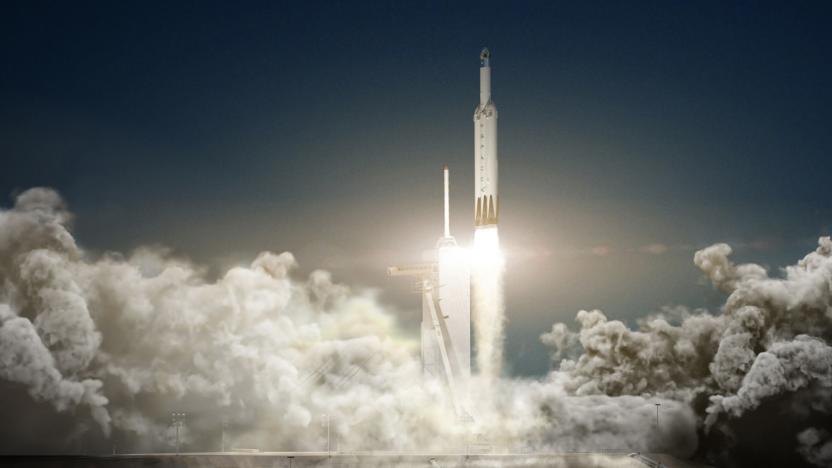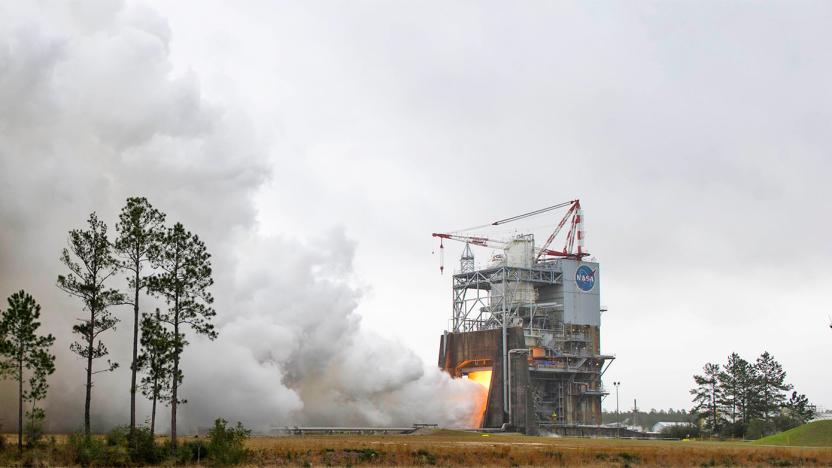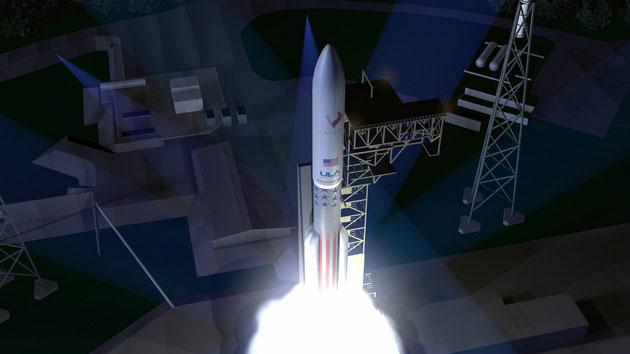timeline16rocketman
Latest

NASA's newest rocket booster is ready for deep space
NASA fired up a massive booster in Utah this morning. The powerful machine was put through its second and last qualification test in the desert before it's ready to facilitate the flight of the world's most powerful rocket to date.

SpaceX aims to relaunch one of its rockets this fall
SpaceX is gearing up for something huge this fall. Elon Musk announced on Twitter that the Falcon 9 that launched the Thaicom 8 communications satellite is back in the hangar with the three other first stages that made it safely back on the ground. In the same tweet, he revealed that the company is planning for its first reflight in either September or October. The private space corp originally aimed to relaunch a rocket in May or June after its first successful barge landing, but that was obviously too soon to be feasible.

SpaceX: our Falcon rockets are more powerful than we thought
If you thought SpaceX was already making a fuss over the capabilities of both its existing Falcon 9 rocket and the upcoming Falcon Heavy, you haven't seen anything yet. The company has posted updated specs showing that both vehicles are more powerful than previously thought. A Falcon 9 is now known to be capable of hauling 50,265lbs to low Earth orbit, up from just shy of 29,000 pounds. The Falcon Heavy, meanwhile, will carry 119,930lbs instead of the previously promised 116,845lbs. Elon Musk chalks up the improved figures to more thorough testing -- SpaceX hasn't upgraded the hardware, at least not yet.

NASA successfully tests rocket engines designed for deep space
NASA says that its latest tests are a milestone towards the next stage of space exploration — and Mars. It successfully fired an RS-25 rocket engine for 500 seconds on Thursday March 10th. This is the same engine that will eventually send astronauts on the first deep-space mission in more than 45 years. It's a key part of NASA's new Space Launch System (SLS), aimed at taking humans to nearby asteroids and, after that, the red planet. Four of these engines power the SLS — making up a combined thrust of two million pounds.

Jeff Bezos beats Elon Musk's SpaceX in the reusable rocket race
Blue Origin, the private space firm owned by Amazon's Jeff Bezos, has just dropped a huge gauntlet in the race to develop a reusable rocket. It just launched its New Shepard space vehicle (video, below), consisting of a BE-3 rocket and crew capsule, to the edge of space at a suborbital altitude of 100.5 kilometers (62 miles). The capsule then separated and touched down beneath a parachute, but more importantly, the BE-3 rocket also started its own descent. After the rockets fired at nearly 5,000 feet, it made a a controlled vertical landing at a gentle 4.4 mph.

SpaceX gets the all-clear to launch most NASA science missions
After three long years, SpaceX finally has approval to launch most of the US' scientific missions. NASA tells Spaceflight Now that it recently greenlit the use of SpaceX's Falcon 9 rocket for "medium-risk" payloads, which covers all but the most valuable cargo. That rules it out of launching missions destined for places like Mars, but it also opens the door to more opportunities for Elon Musk and crew. Although they already have government contracts, they should have a much easier time getting that all-important space agency business. The company won't have to wait long to prove its chops, either. A Falcon 9 will carry Jason 3, a satellite meant to measure ocean roughness, in late July. [Image credit: SpaceX/Steve Jurvetson, Flickr]

Here's the next rocket that will carry US satellites into space
You may not be familiar with United Launch Alliance, but it's about to handle a large chunk of US space launches -- and that makes the rocket you see above particularly important. That's Vulcan, ULA's newly unveiled launch system for satellites and similar payloads. The two-stage vehicle is designed to be the "most cost-efficient" rocket of its kind, helped in no small part by new recovery tech (Sensible Modular Autonomous Return Technology, or SMART) that captures the booster main engines in mid-air. Vulcan also eliminates an earlier dependence on Russian powerplants by relying on low-cost, reusable liquid natural gas engines from Jeff Bezos' Blue Origin. You probably won't be happy with this machine if you're rooting for SpaceX, but it'll be a big deal if its affordable design gets more equipment into orbit and beyond.

Europe will make Ariane rockets more competitive with SpaceX
No, not "airline" rockets. Ariane rockets. According to The Wall Street Journal, EU ministers are finally about to approve plans for a more affordable version of the Ariane series -- the same family that launched Rosetta back in 2004. What counts as affordable when developing a rocket, is reportedly between five and six billion dollars. The European Space Agency makes no secret that its goal is to compete with commercial entities like SpaceX, which already has a program to deliver supplies (and humans) to the ISS. No surprise, given that SpaceX's very own Elon Musk already went on record saying that the current Ariane 5 rocket stands "no chance" against his competition. SpaceX doesn't need to worry just yet though, as the roadmap for Ariane 6 wouldn't see a launch until the end of the decade.

NASA gives the go-ahead to a rocket designed for deep space exploration
For the past few years, NASA's been working on a powerful rocket called the Space Launch System meant for missions to the moon, Mars and other places far from our planet. While the rocket's not quite ready to take Bruce Willis to an asteroid, it's at least getting nearer to a launch pad -- the agency has just finalized a $2.8 billion deal with Boeing to start building its core stage and developing its avionics system. The deal went through recently after the core stage passed its critical design review, where 11 experts inspected 3,000 of its artifacts. A core stage, by the way, is the middle part of a rocket that makes up most of its body: the one Boeing's building for the SLS is a 200-foot tower that'll store cryogenic liquid hydrogen and liquid oxygen to fuel the engines.

SpaceX launches new Falcon 9 rocket with 60 percent stronger engines (video)
While most of the news about SpaceX has surrounded the Grasshopper lately, the firm has been plugging away at its Falcon rocket, too. This just-launched Falcon 9 (dubbed version 1.1) boasts 60 percent more powerful engines, longer fuel tanks and according to the Global Post, other new features that were designed to boost lift capacity and "simplify operations for commercial service." To that end, the spacecraft was carrying a science and communications satellite for Canada's MDA Corp. when it left Earth's atmosphere. The take-off comes just over five years after the first Falcon's departure, and its itinerary will take it around both poles. Just remember, for a cool $56.5 million you too can send a Falcon 9 into space.






